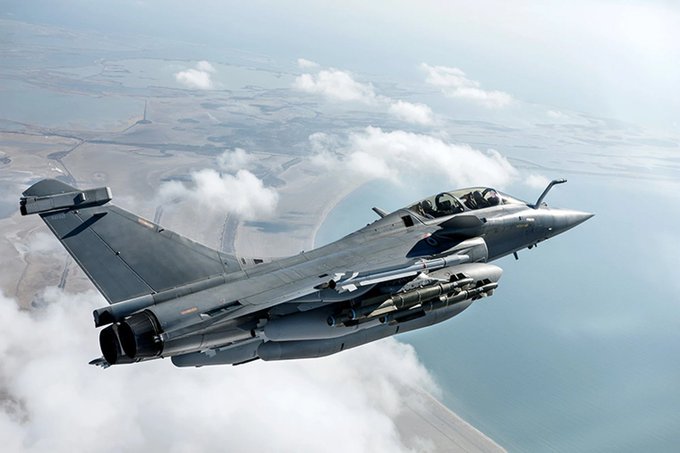
SOURCE: TNN
The country’s latest fighter jets, the omni-role Rafales, have now begun to fly in the skies over Ladakh amid the ongoing almost five-month long military confrontation with China in the high-altitude region. Defence sources on Sunday said the five Rafales, which were formally inducted into service at the Ambala airbase on September 10, have conducted some “familiarization sorties” in Ladakh in recent days. “Rafale pilots have flown the jets from Ambala to Ladakh to familiarize themselves with the operational environment there,” said a source.
Without midair refueling, the 4.5-generation Rafales have a combat range of 780-km to 1,650-km, depending on the nature of their mission. Moreover, the fighters are armed with long stand-off weapons like the over 300-km range `Scalp’ air-to-ground cruise missiles. “As such, the Rafales don’t have to be based at Leh,” said the source.
At the induction ceremony, which was attended by defence minister Rajnath Singh and his French counterpart Florence Parly, IAF chief Air Chief Marshal R K S Bhadauria had said the twin-engine Rafales were now “good to go and deliver” for the country.
The induction of Rafales, with their ability to “rapidly access” the country’s areas of interests, “could not have happened at a more opportune time considering the security scenario today”. Rafales will “intimidate and dominate whenever and wherever” they are deployed, he said.
Defence minister Rajnath Singh, in turn, said the induction of the game-changing Rafales was “a strong message for the world and especially for those who challenge India’s sovereignty”.
The five Rafales, after they touched down at Ambala from France on July 29, have also been flown in day and night sorties in different terrains, including the mountainous one in Himachal Pradesh, towards integrating them with the overall war-fighting machinery.
All the 36 Rafales, under the Rs 59,000 crore deal inked with France in September 2016, are slated to be delivered by 2021-2022. Armed with their ‘Meteor’ air-to-air missiles (120-150 km strike range), ‘Scalp’ missiles and other armaments, they will be able to outgun their Pakistani and Chinese rivals like F-16s, JF-17s and J-20s.
The IAF currently has deployed an “adequate number” of frontline Sukhoi-30MKI, Mirage-2000, MiG-29 and other fighters as well as Chinook heavy-lift and Apache attack helicopters in Ladakh as well as other stretches along the 3,488-km Line of Actual Control to cater for any contingency.
The Rafales, if required in an emergency, can also be combat deployed swiftly. The Ambala and Hashimara airbases are eventually slated to house 18 Rafales each for the western and eastern fronts.






